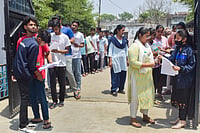Operation Parakram, which was launched after the December 13 attack on Parliament, saw a heavy deployment of troops along the borders of Punjab, Rajasthan, Gujarat and the Jammu sector. This does not include the mobilisation of warships on the western sector and combat aircraft kept in readiness from the western and southern air commands.
Army headquarters is well aware of what this level of demobilisation means. For a start, the three strike corps—1 Corps Mathura, 2 Corps Ambala and 21 Corps Bhopal—dispersed over 300 to 400 km along the IB, will have to be brought to a common departure camp. "It would require close to 150 railway rakes and massive airlifting to move out each corps," say army sources. A single strike corps has three divisions including an armoured, artillery and independent defence brigade. The logistics involved in transporting some of the heavy weaponry, such as T-90 and T-72 tanks, from their deployed positions to a railhead will indeed be testing. Besides the strike corps, the 12 Corps Jodhpur, 11 Corps Jalandhar and the 10 Corps Bhatinda which were also moved to the front during the build-up, will return to their respective formations.
Defence analysts point out that the costs of mobilising men and weaponry, maintaining equipment and keeping them in combat mode for the last 10 months would have easily cost the exchequer about Rs 3,000 crore. Demobilising too will tax resources. No one is willing to put a ballpark figure but a serving general told Outlook that it would entail a high cost. "We are working out the logistics of what to move out first and when. This will be finalised within a week," says a brigadier at army headquarters. It has been generally agreed that demobilisation is likely to begin in Punjab, followed by Rajasthan, Gujarat and then the Jammu sector. A combined corps commanders’ conference, scheduled to be held on October 23, will fine-tune the programme for the troop pull-out.
Overseeing the complete de-escalation process are the vice-chief of army staff, Lt Gen N.C. Vij, and the director-general of military operations, Lt Gen S.S. Chahal. Army headquarters has decided that the Engineering Corps, along with the personnel of infantry who have laid mines along huge tracts in Rajasthan and Punjab, will stay back for the arduous task of demining.
Which is a tricky task for the army as it is still undecided which areas are be to demined. The entire stretch of the IB cannot be demined since mines will have to be laid afresh should the security environment deteriorate. "Every mine is clearly mapped by army units and it will take over two weeks to make the area safe for mobility," says an army official. According to figures made available, over 125 soldiers, including civilians, died during the build-up period while laying mines or accidentally straying into mined areas.
Despite the decision to pull troops back, the army is confident that the deployment of troops from the 14, 15, and 16 Corps along the Line of Control (LoC) will be effective in checking infiltration. In the last 10 months, 921 intruders were killed by the army along the LoC.

























